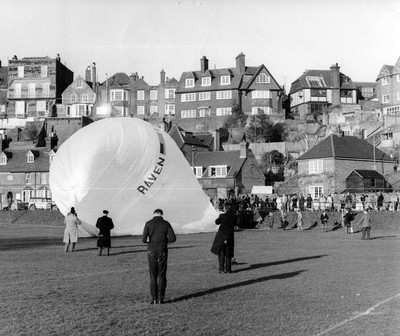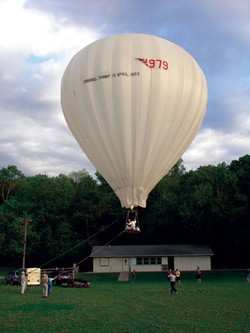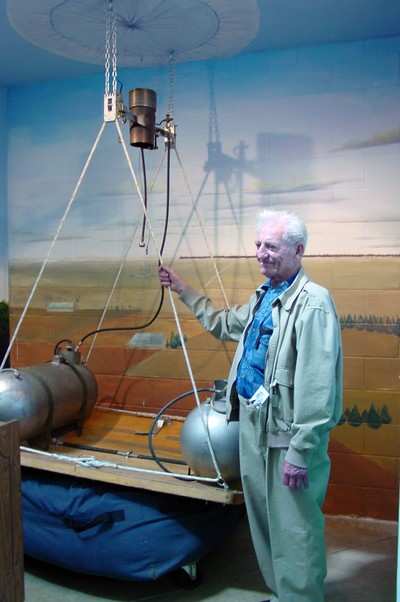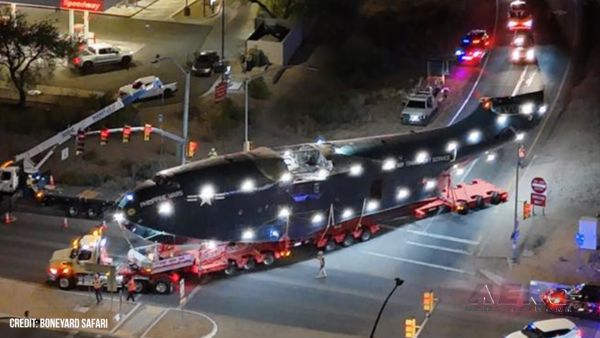The first hot air balloon to be flown across the English Channel
and arguably the single most important surviving historical
artifact of the sport of ballooning was enshrined in the National
Balloon Museum in Indianola, Iowa in ceremonies on Saturday, May
20th.

On April 13, 1963, pilot Ed Yost and photographer Don Piccard
launched the 60,000 cubic foot hot air balloon "Channel Champ" from
the village of Rye, England. Three hours and seventeen minutes
later Yost landed the aircraft near Gravelines, France completing
the historic voyage. Newspaper headlines around the world
proclaimed their success the next day and effectively introduced
the hot air balloon to the world.

The purpose of the flight was to demonstrate the range and
endurance of Yost's new aircraft. Yost is recognized as the 'Father
of the Modern Hot Air Balloon' based on his work at Raven
Industries with the Office of Naval Research to create an aircraft
that would carry one man and enough fuel to fly for at least 3
hours, carry a load to 10,000 feet and be reusable and require a
minimum crew to launch.
 The Channel Champ was a
further refinement of Yost's first models. None of those balloons
remain today making the Channel Champ an undeniably historic
aircraft.
The Channel Champ was a
further refinement of Yost's first models. None of those balloons
remain today making the Channel Champ an undeniably historic
aircraft.
During the flight Yost and Piccard sat on a simple "board"
between two 30-gallon propane tanks. The tiny one can burner
produced a mere 2-million BTUs (today's modern hot air balloon
burners will produce 11-20 million BTUs). The balloon had no top
vent, instead the top was simply gathered together, tied with nylon
cord and fixed with an explosive squib that, when fired after
landing, would allow the balloon to rapidly deflate.
During the flight Yost was forced to climb to an altitude of
13,500 feet to find favorable winds that would carry them across
the Channel and into France.
Ironically the Channel Champ was almost lost to history. The
famous "board" has been on display for many years at the Forbes'
family balloon museum in Balleroy, France but the envelope was
thought to have been destroyed or lost until a retired Raven
Industries employee contacted Yost saying he believed he had the
historic envelope, having taken it home years before when it was
being discarded. An inspection proved the envelope was the historic
balloon and it was later reunited with the "board."
After some minor restoration the balloon was inflated for the
last time at the Albuquerque International Balloon Fiesta in
October 2005. On Saturday it was moved to its new home, the
National Balloon Museum in Indianola, Iowa also home of the Balloon
Federation of America.
During the ceremonies Yost (pictured below) regaled the
appreciative audience with stories from the flight including an
admission that he was "scared to death" not by the flight, but by
the ride with French police back into Paris where a ceremony was
staged for he and Piccard.

A 20-minute movie of the famous flight pieced together from
Piccard's original films was also shown to the crowd after which
Yost posed for pictures and signed autographs.
 ANN's Daily Aero-Term (05.18.25): Flight Recorder
ANN's Daily Aero-Term (05.18.25): Flight Recorder Aero-News: Quote of the Day (05.18.25)
Aero-News: Quote of the Day (05.18.25) Classic Aero-TV: ELA Aviation Sports New Vertical Takeoff Gyroplane
Classic Aero-TV: ELA Aviation Sports New Vertical Takeoff Gyroplane Airborne 05.19.25: Kolb v Tornados, Philippine Mars, Blackhawk Antler Theft
Airborne 05.19.25: Kolb v Tornados, Philippine Mars, Blackhawk Antler Theft Klyde Morris (05.16.25)
Klyde Morris (05.16.25)






